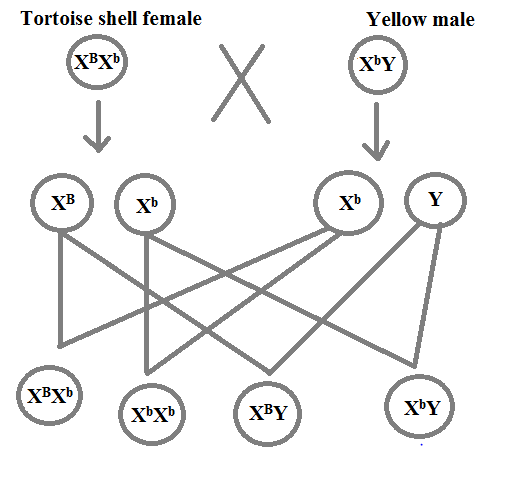Incats,theallele(B)producesblackcolorbut(b)producesayellowcoat. Theseallelesareincompletelydominanttoeachother.Aheterozygote producesatortoiseshellcolor.Thealleles(B)and(b)aresex-linkedaswell. Crossatortoiseshellfemalewithayellowmale.
DNA is the genetic material in most living organisms. It is the information hub of the cell that contains instructions for the synthesis of proteins. DNA contains inheritable segments that are called genes that contain instructions for protein synthesis. Alleles are the pair of contrasting characteristics that are responsible for the phenotype of a gene.
Alleles are the alternative form of a gene. The alleles codes for the different versions of a particular inherited trait. Traits refer to the characteristics. The alleles can be either dominant or recessive. Dominant alleles are the alleles which hides the expression of recessive allele. A single dominant allele is enough to show the presence of a particular trait. A recessive allele is an allele which shows its effect only when present in its homozygous form.
Incomplete dominance is a condition in which a dominant allele does not mask the effect of recessive allele completely and as a result the organism shows the phenotype which has effect of both dominant as well as recessive allele.
In cats, the allele (B) produces black color but (b) produces a yellow coat. These alleles are incompletely dominant to each other. A heterozygote produces a tortoise shell color. The alleles (B) and (b) are sex-linked as well. Crossing a tortoise shell female with a yellow male:
BB: black color
bb: yellow coat
Bb: tortoise shell color

Step by step
Solved in 3 steps with 1 images









